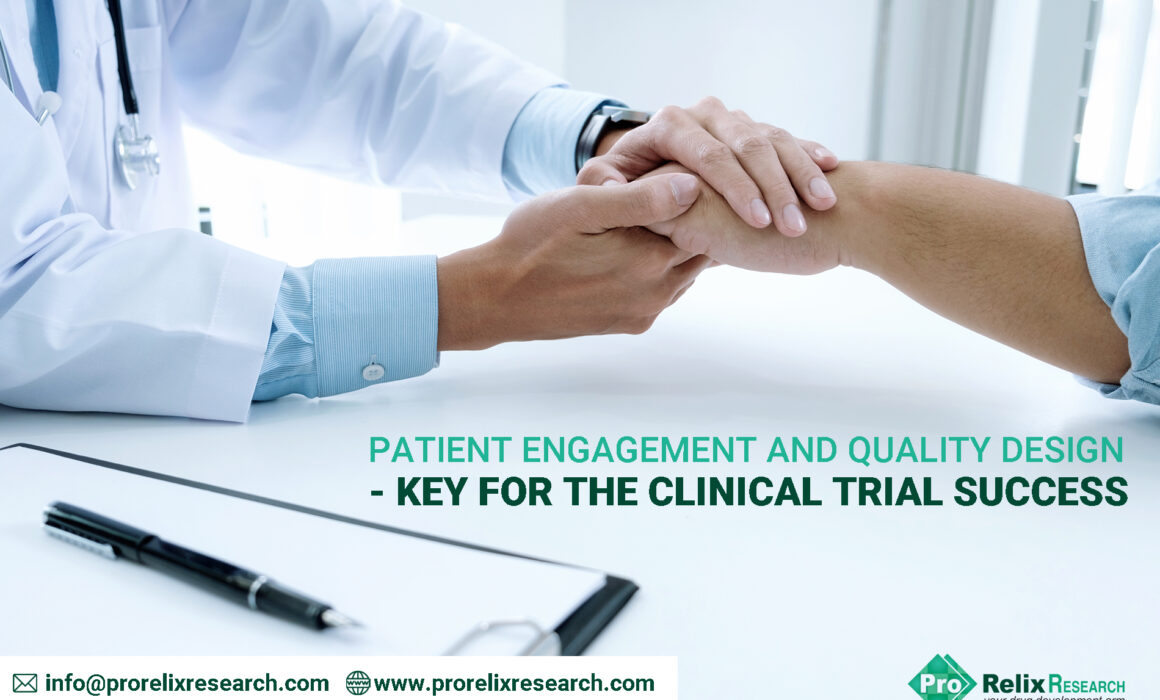Patient engagement & Quality design – key for the clinical trial success
Working with a variety of stakeholders to positively change clinical trials, making them more streamlined, efficient, and patient-focused requires transformational shifts in the design and conduct of clinical research (clinical trials). Let’s take a look at the evolution of clinical trials in three key areas, among many, in which ProRelix Research has played a critical role in moving the clinical trials toward more efficient, high-quality, and patient-centric trials:
1. Trial Quality:
Regulators have long acknowledged a need to change how the industry approaches clinical trial quality in order to focus on reducing errors that undermine data integrity and patient safety, essential for the clinical data management systems. Drawing on the expertize of key stakeholders, ProRelix Research implemented an effective and efficient trial monitoring, risk-based approach to monitoring which reflects our principles of work. We have developed the concept of Quality by Design, taking the focus from a reactive approach using our internal audits to a proactive approach that builds quality into clinical trials at the outset.
2. Patient Engagement and Centricity
ProRelix Research has been a pioneer in patient engagement, involving patient representatives in the project design and throughout its project execution for better recruitment retention. This released landmark recommendations that are currently used by multiple stakeholders to facilitate productive relationships with patient groups around clinical trials.
We define patient centricity as acknowledging the value of the patient’s own experience with their medical condition and applying this experience toward the design of a clinical research study or similar initiative. In the context of clinical trials, patient centricity refers to engaging with patients throughout both the study design and execution.
In all aspects of healthcare, this movement has led to higher levels of patient collaboration, engagement in key decision-making, better medical outcomes, and greater access to innovative treatments. One aspect that is crucial for your clinical trial is the recruitment stage. Here, patient centricity and engagement play a foundational role in any study’s success and significantly impact on financial benefit for our clients.
3. Real-World Evidence
Since ProRelix Research’s inception, we have recognized that “real-world evidence” from electronic health records, mobile devices, and other sources can provide unique insights into important clinical questions and could improve the efficiency of clinical trials. We have developed a system to link safety data from multiple sources, paving the way for the use of connected datasets in clinical trials.
Before conducting a real-world review of a product, it’s vital to study the existing product and competitor data to see whether it’s likely that your product will perform better or worse in the real world. This should be done as early as possible and includes consulting with experts who can evaluate and predict the channeling and other confounding factors that are expected to arise when the product enters the market.
A plan for RWE is needed to support market access and pricing. It should not only consider benefits, but also take possible risks of real-world effectiveness into account, and have plans to mitigate the impact of potentially biased outcomes.





